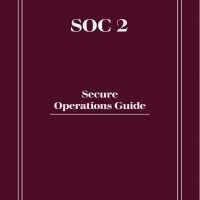Complexity continues compounding as on-premises data centers persist despite accelerating cloud migration. Managing this dynamic landscape demands consolidating historically disparate skill sets into cohesive teams blending cloud fluidity with institutional wisdom. In my own journey, the synergies uncovered at the intersection of legacy and next-generation often surprise — fusing stability and agility yields unexpected innovation.
IT’s Evolving Role: An Opportunity
IT operations historically focused on physical servers and hardware metrics. Meanwhile development prioritized shipping code quickly. Cloud dissolution of infrastructure barriers brought these groups literally closer; now proximity must catalyze cultural collaboration. Shared knowledge strengthens wisdom on both sides.
Technology teams once operated in silos managing independent systems. Now design demands integrating singular panes of glass spanning data centers and clouds. Platforms like Azure Arc decentralize control planes unifying policy and visibility. Common identity fabrics help govern access while guardrails auto-remediate drift.
Optimizing Consumption Habits
The public cloud’s infinite illusion challenges budget predictability. Cloudops requires cloud analytics. Monitoring tools provide insight informing better provisioning behaviors promoting savings — automatically right-sizing and shutting off unused instances. Every environment believes itself infinite, but constraints focus innovations.
Legacy architecture relied on redundancy to ensure uptime. Cloud substituted redundancy with resilience — dynamically adapting capacity in moments automatically. Blend these so failures trigger seamless rebuilding rather than manual intervention. Backup still matters, but intelligent reconstruction minimizes outages through orchestration.
Securing High-Value Assets
Security must now traverse environments securing data wherever it travels. Uniform network policies, next-generation endpoint protection and firewalls with application-layer visibility close gaps while facilitating controlled flow. Inventory high-value assets and map flows guiding strategic segmentation. Test to confirm governance stays intact across hybrid ecosystems.
Ultimately technology merely enables — people innovate solutions. Mixed teams harboring legacy expertise combined with cloud native fluency build robust yet dynamic architectures. More perspectives yield more creative outcomes. Foster empathy and inclusivity forging bonds between groups overcoming initial hesitations through transparency.
The Future Calls for Consolidation
As managing complexity persists as IT’s charter into the future, consolidating fragmented insights will define operations excellence. Technology should take cues from culture — establish trust and communication building shared vision despite past divisions. Listen more, assume less. Together we secure strategic advantage; divided we construct our own obstacles. The future is unwritten; let wisdom guide our pen.


















